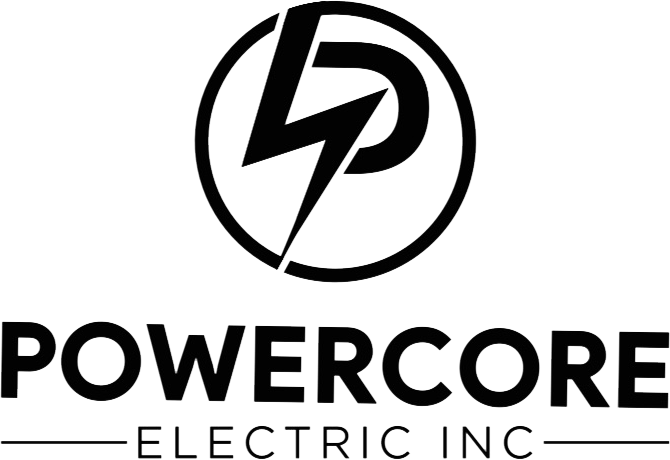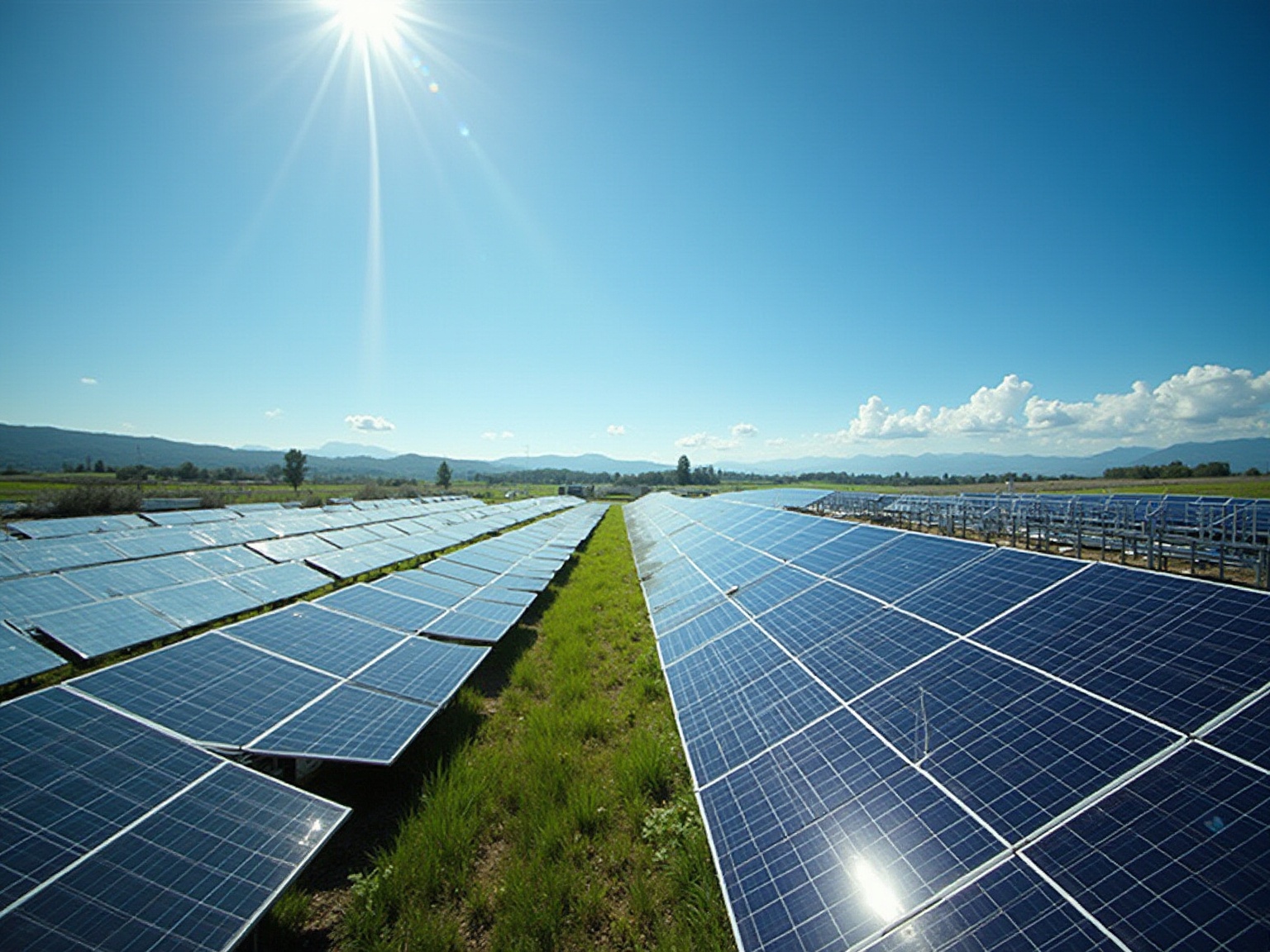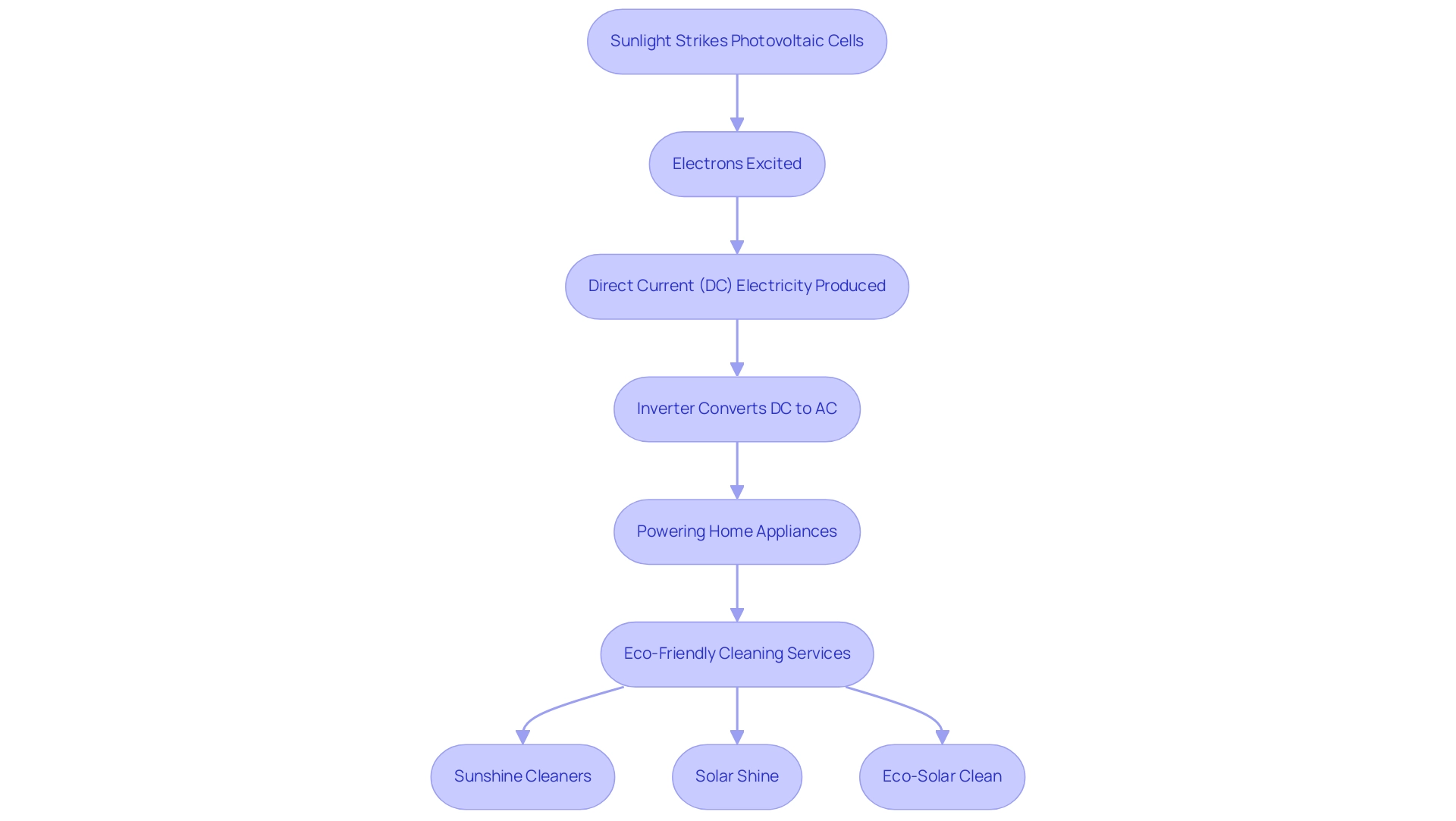Overview
Photovoltaic arrays are systems composed of multiple photovoltaic (PV) modules that convert sunlight into electricity, playing a crucial role in renewable energy solutions for homes. The article emphasizes their significance in reducing electricity costs and carbon footprints while discussing the impact of regulatory changes, technological advancements, and community programs that enhance the accessibility and efficiency of solar energy systems.
Introduction
As the world increasingly shifts towards sustainable energy solutions, photovoltaic arrays are emerging as a cornerstone of this transformation. These innovative systems not only convert sunlight into electricity but also empower homeowners to take control of their energy consumption while reducing their carbon footprint.
With recent changes in regulations and market dynamics, particularly in California, understanding the intricacies of photovoltaic technology has never been more crucial. From optimizing installation strategies to exploring community solar options, homeowners are presented with a wealth of opportunities to harness the sun’s power.
This article will delve into the essential components of photovoltaic arrays, the science behind their operation, and the myriad benefits they offer, guiding readers through the complexities of solar energy adoption and helping them make informed decisions for a brighter, greener future.
Defining Photovoltaic Arrays: An Overview
The definition of photovoltaic arrays involves fascinating setups created to transform sunlight into electricity using panels, or photovoltaic (PV) modules. Imagine these sets as a collection of multiple PV modules collaborating, maximizing the surface area available to capture those sunny rays. Usually placed on rooftops or in open areas, photovoltaic systems are central to renewable power solutions, making them a growing favorite for homeowners keen to adopt sustainable practices.
However, the environment for residential installations is changing, particularly with California’s new building codes and NEM 3.0 regulations that are reshaping the adoption landscape. In Q3 2024, there was a notable 4% decline in new installations, largely attributed to high electricity bills and these changes in net metering. Furthermore, the depletion of the California queue and higher financing costs have further impacted the market, leading to the lowest quarter for new installations since 2021.
Understanding the photovoltaic arrays definition and how these arrays operate is increasingly vital, as they not only form the backbone of power systems but also hold the key to a cleaner, more energy-efficient future for our homes. As we delve deeper into the world of photovoltaic technology, understanding the photovoltaic arrays definition is essential as we consider their vital role in harnessing renewable energy and their potential impact on our electricity bills. Innovative strategies, such as optimizing installation angles and leveraging AI technology, can significantly enhance energy efficiency.
Furthermore, streamlined permitting processes such as NREL’s SolarAPP+ are essential, with 85% of installers indicating that it simplifies the permitting process, thereby encouraging the use of renewable energy. Importantly, government panel programs can offer significant financial incentives for homeowners, making installations more accessible and affordable. For Long Beach tenants, investigating community alternatives or programs that enable shared installations can provide opportunities to gain from renewable resources without the requirement for roof access.
This thorough comprehension provides environmentally aware homeowners and renters with the insight to make educated choices regarding their renewable power options.
Understanding the Components: PV Modules vs. PV Arrays
PV modules are the individual solar panels that play a crucial role in transforming sunlight into electricity, forming the essential building blocks of your solar power system. When these modules are linked, they form what is referred to as a photovoltaic system, which exemplifies the photovoltaic arrays definition, greatly enhancing your overall power production by utilizing the combined strength generated by each module. In a standard home configuration, you might discover several groups functioning harmoniously to satisfy your power requirements.
On average, the definition of residential photovoltaic arrays includes about 20 to 25 PV modules, which is vital for maximizing your energy savings. It’s also important to consider the financial aspects of your renewable energy investment; the average cost of home energy systems in the U.S. is approximately $3.39 USD/W. After the tax credit, this translates to an installation cost of roughly $2.62 per watt, giving you a realistic perspective on the financial implications.
For those lacking roof space for PV panels, community energy programs present a fantastic alternative, allowing you to participate in local initiatives while receiving credits on your electricity bills. Furthermore, homeowners ought to evaluate the optimal battery options for effective power storage to enhance their photovoltaic systems. However, be aware of challenges such as the depletion of the California queue and rising financing costs affecting residential installations in 2024; understanding these factors can help you make informed decisions.
By grasping the photovoltaic arrays definition and the distinction between PV modules and photovoltaic systems, you can clarify the design of energy systems and value their combined role in producing clean energy for your home.
How Photovoltaic Arrays Work: The Science Behind Solar Energy
The definition of photovoltaic arrays involves harnessing the power of sunlight through a fascinating process known as the photovoltaic effect. When sunlight strikes the photovoltaic cells within the PV modules, it excites electrons, producing direct current (DC) electricity. This DC electricity is then transformed into alternating current (AC) by an inverter, allowing you to power your home appliances effectively.
However, the efficiency of this conversion isn’t solely about the quality of the modules; it also hinges on factors like the angle of sunlight hitting the modules and the overall environmental conditions. For example, adjusting the angle of sunlight can greatly improve power generation, making it essential for homeowners to think about the photovoltaic arrays definition and their arrangement. To keep your systems operating at peak efficiency, utilizing top-rated solar cleaning services such as:
- Sunshine Cleaners
- Solar Shine
- Eco-Solar Clean
can be extremely beneficial.
These services focus on eco-friendly practices, tailored packages, and even waterless techniques to maintain your system’s efficiency without harming the environment. Regular professional cleaning not only enhances power production but also contributes to sustainability by reducing dependence on grid power and minimizing your carbon footprint. Case studies have demonstrated that homeowners who participate in regular maintenance experience not only enhanced performance but also prolong the lifespan of their panels, preventing issues like corrosion and buildup.
Keeping updated on innovations in photovoltaic technology, including the photovoltaic arrays definition and advancements like bifacial PV modules, can assist you in maximizing the advantages of your setup. By understanding these principles and monitoring advancements in photovoltaic technology, you can better appreciate how your setup functions and the factors that affect its power generation.
Applications and Benefits of Photovoltaic Arrays in Renewable Energy
Solar panels have become a favored option for environmentally-aware homeowners keen to reduce their electricity costs while adopting sustainable practices. By harnessing the sun’s power, you can significantly reduce your dependence on grid electricity, which is often derived from fossil fuels. This shift not only translates to cost savings but also plays a crucial role in minimizing carbon footprints—a vital consideration in our fight against climate change.
Notably, the federal tax credit for renewable energy allows homeowners to deduct 30% of their system’s cost from their federal tax bill, making installations more affordable than ever and highlighting the financial incentives available for those considering this energy source.
But the benefits of photovoltaic arrays definition extend beyond just financial savings. They enable homeowners to attain independence in power use and can even increase property values. A recent trend has developed where homeowners are increasingly motivated to install photovoltaic panels for backup power, reflecting a desire for power resilience over mere financial returns.
This insight highlights an increasing recognition of the significance of dependable power sources in our daily lives.
As you contemplate shifting to renewable power, understand that Powercore Electric is your reliable ally. With our local expertise in California’s unique resource requirements, we ensure unmatched quality craftsmanship and a customer-first approach. Our team is dedicated to providing personalized service, ensuring that every installation meets the highest standards of quality, safety, and efficiency.
Our energy-efficient sunlight solutions not only benefit your wallet but also contribute positively to the planet. As more homeowners adopt the photovoltaic arrays definition, the collective influence on our environment and power landscape is profound. With 69% of solar companies reporting improved supply chain issues in 2023, the solar industry is demonstrating positive growth and accessibility.
Furthermore, 85% of installers who utilize NREL’s SolarAPP+ permitting software report that it significantly eases the permitting process, reinforcing the message that transitioning to renewable power sources has never been more achievable or beneficial for both your wallet and the planet.
Get your free, personalized estimate today and discover how we can help you power your home or business sustainably.
The Future of Photovoltaic Arrays: Innovations and Challenges
The future of photovoltaic arrays definition is looking bright for eco-conscious homeowners, driven by continuous innovations that enhance efficiency and reduce costs. Exciting advancements in sunlight-harvesting technology, such as bifacial structures and cutting-edge perovskite cells, are poised to significantly enhance energy output, making these solutions even more attractive. Remarkably, vertical photovoltaic panels have achieved a record efficiency of 248.4 kWp on rooftops, highlighting the remarkable technological progress in the field.
However, when considering solar service providers, it’s essential to compare their offerings. For example:
- Provider A may offer competitive pricing but lacks strong storage solutions.
- Provider B provides comprehensive service packages that include installation and maintenance but at a higher cost.
Additionally, challenges in power storage and grid integration can affect the effectiveness of these services.
In 2022 alone, the global renewable energy market saw investments exceeding USD 320 billion, with the photovoltaic arrays definition playing a significant role by accounting for nearly 45% of total electricity generation investment. This trend underscores the growing demand for clean energy solutions. As highlighted during COP26, where India set ambitious targets for increasing non-fossil power capacity and renewable electricity generation, addressing these challenges will be crucial for the widespread adoption of the photovoltaic arrays definition.
By staying informed about these developments and comparing service providers, you can make educated decisions about your solar investments and actively contribute to fostering a sustainable future.
Conclusion
Embracing photovoltaic arrays presents a powerful opportunity for homeowners to take charge of their energy consumption while contributing to a sustainable future. By understanding the essential components of these systems, from individual PV modules to the collective power of arrays, homeowners can make informed decisions that maximize their energy savings and reduce their carbon footprints.
The science behind how photovoltaic arrays convert sunlight into usable electricity is not only fascinating but also critical to optimizing their performance. Factors like panel placement and regular maintenance play a significant role in enhancing efficiency, ensuring that homeowners can reap the full benefits of their solar investments. Moreover, financial incentives, such as the federal solar tax credit, make the transition to solar energy more accessible, allowing families to enjoy both economic and environmental rewards.
Looking ahead, continuous innovations in solar technology promise to further enhance the efficiency and affordability of photovoltaic systems. As the market evolves, so too do the solutions available to homeowners, underscoring the importance of staying informed about advancements and potential challenges. By actively engaging with these developments, homeowners can not only improve their energy independence but also contribute to a collective movement towards a cleaner, more sustainable planet.
In this journey toward renewable energy, the role of community, expert guidance, and innovative solutions cannot be overstated. With the right knowledge and resources, making the switch to solar energy can be a fulfilling and impactful decision, paving the way for a brighter, greener future for all.



